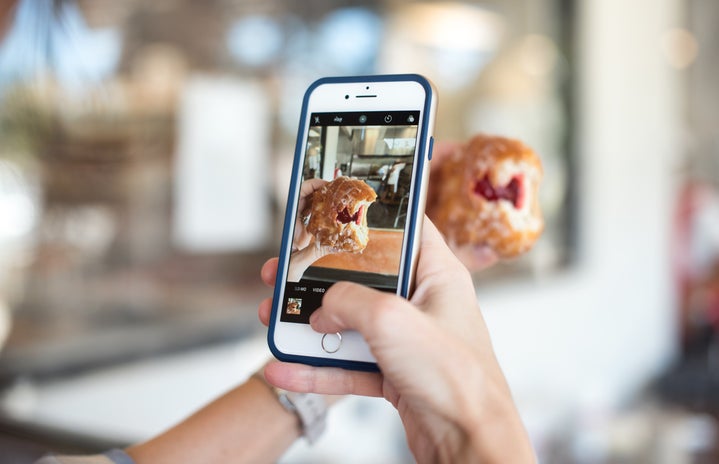“Zero calorie food” sounds all too good to be true. Is there really such a thing as calorie-free? Well, sort of. With the exception of water, all foods and drinks have some amount of calories. However, those that are “calorie free” contain very, very few such that their impact on your daily calorie intake is negligible. As more of these products hit the shelves, it can be difficult to determine which are healthy and which are gimmicks. What’s the verdict on some of the most popular zero-cal foods? Here’s what we found out.
Celery
Celery is full of nutrients and fiber, and it does have its place as part of a balanced diet. But if you’re reaching for a stalk and expecting to still feel satisfied in an hour, don’t count on it. One medium stalk of celery has around 6 calories, which essentially makes no dent in your daily intake. Eating it plain won’t help your grumbling stomach, either. If you do want to munch on some celery, Melanie Jatsek, RD suggests giving it some “staying power” by adding a tablespoon of peanut butter. The healthy fats in the peanut butter will keep you satisfied much longer, so you’re less likely to be raiding the fridge before your next meal.
Artificial Sweeteners
We’ve all heard both good and bad things about artificial sweeteners such as Splenda, Sweet N’ Low, and Truvia, so it can be difficult to determine what is fact and what is fiction. Artificial sweeteners are in most popular “diet” and “low calorie” products, so it is nearly impossible to avoid them in a trip to the grocery store. Because these artificial sweeteners are so much sweeter than regular sugar, consuming them in excess can ultimately change your eating habits. A 2004 Purdue University study found that “the body’s natural ability to regulate food intake and body weight may be weakened when this natural relationship is impaired by artificial sweeteners.” While the effects of artificial sweeteners are still debatable, consuming artificial sweeteners in moderation won’t hurt your health. If you do have a sweet tooth, adding some Truvia to your coffee or having the occasional diet soda is completely fine. As is true with most things, just don’t overdo it.
Diet Soda
If you have a diet soda every once in a while, that’s fine. However, drinking several cans per day could be harmful to your health. Diet sodas not only have no nutritional value whatsoever, but many also contain aspartame, a no-calorie sugar substitute that is 180 times sweeter than the real thing. If the bubbly stuff is a staple of your diet, nutritionist Susan Holmberg says you’re training your taste buds to prefer sweeter foods and drinks, which are usually higher in calories.
Since diet sodas are void of any nutrition, they contribute nothing positive toward your overall health. As naturopathic doctor and certified nutritionist Dr. Ria Gilday explains, “In order for the human body to burn calories for energy, the process requires minerals, vitamins, coenzymes, enzymes, and a host of other nutrients.” So what’s the point of filling your body with all those chemicals? If you like the carbonation, stick to seltzer with a squeeze of lemon. It’s much healthier, more refreshing, and free of mysterious chemicals.
Flavored Waters
Flavored waters are a good option if plain water is too boring for your taste buds. However, be aware of any artificial sweeteners helping to give your beverage that extra zing. As mentioned above, artificial sweeteners can make you crave sweeter, higher-calorie foods that are nutritional nightmares. But if you can control your cravings, then sipping on flavored water won’t do you any harm. Try Hint Unsweetened Essence Water or Dasani flavored waters; both have a natural-tasting sweetness that doesn’t leave a bitter aftertaste. However, the best option is always plain water. Go natural and squeeze some fresh lemon or lime into your drink — it tastes better than the artificial stuff!
Salad Spritzers
Although many salad sprays claim to be calorie free, pay attention to the serving size. Most brands only allot about two sprays per zero calorie serving, and who only uses two sprays? While there is nothing nutritionally bad about these spritzers, Melanie Jatsek, RD likes to apply her idea of “staying power” to these products, too. She explains, “If you want that salad to have ‘staying power’, use regular, full-fat dressing. One or two tablespoons of dressing constitutes a serving size, so stick with that to get the health benefits and avoid any extra calories. Another thing that might surprise you is that the fat in that dressing actually helps your body absorb the vitamins in the salad!” Practice moderation with oil-based and low-fat dressings like balsamic vinaigrette. Your body will not only absorb more nutrients from your meal, but you’ll also be adding much more flavor to your salad than you would have with two sprays of dressing.
[pagebreak]
Mustard
Mustard is one of those safe sandwich condiments; it’s easy and versatile while giving your lunch an extra kick of flavor. As is true with many calorie-free products, there are a few calories in there, so be aware of serving sizes. Many yellow mustards on the market contain about 3 calories per one tablespoon serving, which contributes an insignificant amount to your daily intake. Be careful which mustard you choose, though, because varieties like honey mustard can pack about 50 calories per one tablespoon serving. In addition to being the perfect compliment to anything between bread, mustard has anti-inflammatory and anti-cancer effects, too. Stick with the yellow condiment, and you’re sure to reap some delicious health benefits.
Calorie-Free Chocolate Syrup and Caramel
While the idea of indulging in these sweets sans guilt sounds great, you might want to think twice before buying these products. Since these calorie-free dessert toppings are artificially made, they taste fake, too. As nutritionist Susan Holmberg explains, “Anything that is supposed to have calories, but because of processing doesn’t, is likely to be made primarily of chemicals… that are no doubt useless at best, and harmful at worst.” Also, if you deprive yourself of the real deal, your body feels the need to splurge elsewhere during the day. Having natural chocolate syrup or caramel once in a while won’t do you any harm, so stay away from the fake versions.
Zero-calorie foods can be incorporated into a balanced diet, but do not count on them to fulfill your nutritional needs. Balance is key. In order to maintain a healthy lifestyle, practice moderation. Try to reach for plain water, because your body will soon crave it instead of chemical-laden drinks. That could also mean you’ll start reaching for the celery instead of the chocolate! (Ok, it’s nice to dream.) Don’t forget to eat a variety of fruits and vegetables so that you can stay energized while keeping up with your busy collegiette™ schedules!
Sources
Dr. Ria M. Gilday, ND, CN
Melanie Jatsek RD, LD, author of Healthy U: A quick reference guide to eating healthy on campus and beating the Freshman 15
Susan Holmberg, Nutritionist
http://abcnews.go.com/GMA/OnCall/story?id=4271246&page=1#.TsKy5xzRw1g
http://healthrecipes.com/negative_calorie_foods.htm
http://photos2.demandstudios.com/DM-Resize/photos.demandstudios.com/gett…
http://www.purdue.edu/uns/html4ever/2004/040629.Swithers.research.html
http://www.thecaloriecounter.com/Foods/1100/11143/5/Food.aspx
http://www.whfoods.com/genpage.php?tname=foodspice&dbid=106

